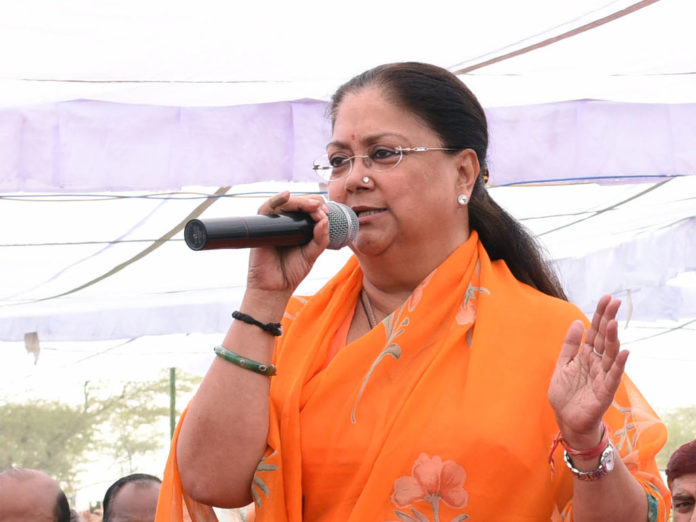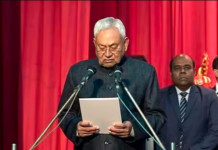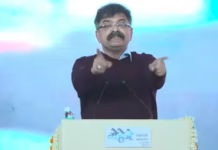Raje’s Vision of Suraaj for Rajasthan was based on change in regulatory landscape and new reforms…
Anachronous laws were scrapped, business-friendly PPP (Public-Private partnerships) were framed and people-friendly policies were introduced in various sectors ranging from education to skill development, air connectivity, agriculture and healthcare. Determined to introduce a positive change, Raje government pitched her mode of reforms that rests on four fundamental pillars:
- Basic Necessities,
- Effective Governance,
- Social Involvement and
- Better standards of living.
With the aim to establish ‘Suraaj’ in Rajasthan, Raje govt. stepped into fourth year of her rule this year. In course of this journey, Raje had powerful tricks up her sleeve like ‘Annapurna’, ‘GRAM’, ‘Bithur Model’ and ‘MJSA’ that addressed basic necessities of life.
Annapurna: A Synonym for Quality Ration and Reasonably-Priced Meals
Vendors turn into entrepreneurs with 5000 fair-price shops, villagers are exposed to rural malls and the hungry receive hearty meals at just Rs. 8 per plate. Yes, it happens only in Rajasthan. CM Raje gave ‘Annapurna’ a whole new meaning by launching fair-price ration shops and mobile meal vans for villages and districts. With Annapurna Bhandars, Rajasthan achieved its first ‘cashless’ PDS-delivery chain based on PoS payments. These rural maps sell about 150 different commodities within 200-feet space. With an initial investment of 50 crores, these shops have produced a monthly turnover of 11 crores, giving employment to about 1,500 people in the process.
Seeing its popularity, Raje government launched mobile ‘Annapurna Rasois’ that provide healthy breakfast at Rs. 5./plate, lunch and dinner at Rs. 8/plate. Using 80 food vans, these meals were circulated in 12 different cities including Jaipur, Jodhpur, Jhalawar, Ajmer, Kota, Banswara, Bikaner, Baran, Bharatpur, Dungarpur, Udaipur and Pratapgarh. This step has so-far covered the nutrition requirements of the natives.
Mukhyamantri Jal Swavlamban Abhiyaan: An Attempt to Recover Maximum Rainwater
What started as a means for preserving rainwater soon transformed into an exemplary example of community participation and water harvesting for the world. The policy was launched in two stages: Phase I and Phase II in January and December respectively. The aim was to conserve rainwater, considering every drop is precious for a state like Rajasthan.
With an initial investment of 1192 crore raised by crowd funding, total 92,522 new projects were completed in 3,529 villages. Consequently, Rajasthan has 50 safe zones today. 94,000 reservoirs in Rajasthan were filled up to 95% with rainwater. Underground water table levels went up with 11,170 million cubic feet water and water was effectively delivered to 45 lakh animals and 41 lakh people through Baawdis, tanks and johads. 28 lakh trees were planted around these water bodies to transform barren lands into green, fertile regions.
With water crises effectively resolved, the state looks forward to converting these regions for eco-tourism purpose.
Bithur Model for Controlling Power Theft
Bithur, a small city based in Ajmer became famous worldwide because of Chhoti Hudda and her group whose efforts lit up around 597 households in Ajmer. These ‘Urja Mitra’ (a name given to these woman helpers) were driven by the idea to control power theft in their village, on CM Raje’s request. Thus, Rajasthan government birthed the epic plan to curb power transmission by trimming down T&D (transmission and distribution) costs. While the government played its role in repairing wires and electric poles, The urja mitras successfully resolved 12 cases of power theft.
5,000 new feeders were installed in every subdivision and women became more active in Maliyon ki Dhani, Devpura, Bhimpura, Naya Gaon and Bithur. Consequently, losses incurred due to power theft declined below 20% and government saved up to Rs. 2 lakh on power transmission. Thus, power crisis was effectively solved in Ajmer and surrounding regions. Considering the massive success of these schemes, Rajasthan government came up with the concept of ‘Solar Sakhis’ that generate awareness regarding solar power. With this, the government looks forward to implementing alternate sources of energy and the Bithur model in every state for effective energy distribution.
GRAM- a Beautiful Amalgam of Conventional Agricultural Practices with Modern Technologies
3-day Global Rajasthan Agritech Meet (GRAM 2016) held between 9 to 11 November showcased celebrity, high-bred animals and novel irrigation/agriculture technologies to boost agricultural output. Rajasthan’s foreign partners– Netherland, Canada, Australia and Israel contributed their agricultural concepts for Rajasthan. The idea was to reap money from agro-marketing, agriculture, horticulture, animal husbandry, rural eco-tourism and agro-processing and manufacturing.
Total 50,000 farmers from Rajasthan and neighbouring states participated in this mega-fair. High-bred animal varieties like ‘Yuvraj’ (1500kgs Murrah Bull), ‘Hansraj’ (Acrobatic camel), ‘Kadaknath’ (chicken with high-protein meat) and Malani horses (high-speed horse variety) were chief attractions. Different vendors and exhibitors presented their high-tech equipment, seeds, flower and fruit varieties, alternate energy sources and smart farms to lure villagers.
Total 38 MoUs worth 4400.89 crores were signed to create 27,379 indirect and 19,293 direct employment opportunities for rural population. Now, the government looks forward to organizing similar events at every division to generate awareness.
On the whole, Rajasthan CM Vasundhara Raje attempted to push the state towards growth and welfare by addressing basic necessities that contribute to better standards of living. Under her visionary leadership, Rajasthan treads on the path of development.












